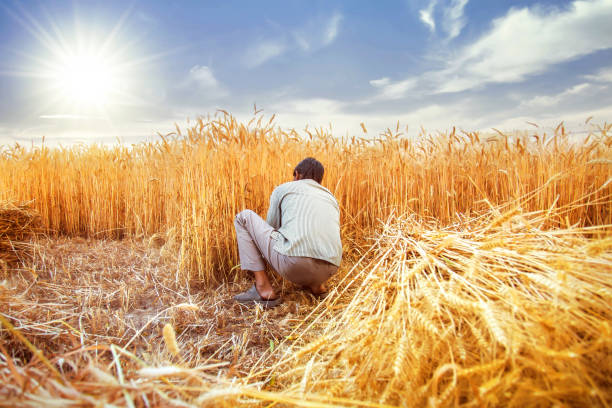Summer Crops in India: Key Varieties for Hot-Season Farming
Agriculture in India is intricately tied to seasonal changes, with different crops suited for various climatic conditions. While the Kharif and Rabi seasons are well-known among farmers and consumers alike, the summer or Zaid season is equally important for ensuring year-round agricultural productivity. The summer season, typically spanning from March to June, provides an excellent opportunity for cultivating short-duration crops that can help maintain soil fertility, provide food security, and increase farmer incomes.
Summer crops in India are grown in the interval between the Rabi harvest and the Kharif sowing. These crops benefit from longer daylight hours, higher temperatures, and controlled irrigation, making them ideal for intensive farming. Let’s explore the major summer crops cultivated across India, their benefits, and best practices for successful cultivation.
Importance of Summer Crops in India
- Maximizing Land Use
Summer crops help utilize farmland that would otherwise remain fallow between major cropping seasons, improving overall productivity per acre. - Additional Income for Farmers
By growing high-demand crops during the off-season, farmers can earn extra revenue and stabilize income throughout the year. - Soil Fertility Management
Growing legumes and green manure crops during summer enhances soil fertility through nitrogen fixation and organic matter replenishment. - Food Security
Summer vegetables and fruits meet the dietary needs of the population during the lean season, ensuring a steady supply in local markets.
Major Summer Crops in India
1. Moong (Green Gram)
Moong is one of the most popular pulses grown during summer. It is a short-duration crop that matures in 60–70 days, requires minimal irrigation, and enriches the soil by fixing nitrogen.
- Soil: Well-drained loamy soils
- Irrigation: Light irrigation at 10–15 day intervals
- Yield: 5–6 quintals per acre
2. Cowpea (Lobia)
Cowpea is a dual-purpose crop used for both human consumption and as fodder. It is heat-tolerant and grows well in arid and semi-arid areas.
- Soil: Sandy loam to clay loam
- Irrigation: 3–4 irrigations throughout the season
- Duration: 60–75 days
3. Watermelon
Among the most popular summer fruits, watermelon requires high temperatures and abundant sunlight for optimal sweetness and yield.
- Soil: Sandy loam rich in organic matter
- Spacing: 2–3 feet between plants
- Irrigation: Frequent, especially during flowering and fruiting
4. Muskmelon
Muskmelon is another summer favorite that grows well in warm climates with controlled water supply.
- Soil: Fertile, well-drained soils
- Temperature: 25–35°C ideal
- Yield: 8–10 tons per acre
5. Bitter Gourd (Karela)
This hardy vegetable is widely grown across India and is well-suited for summer cultivation.
- Soil: Loamy soil with good drainage
- Support: Requires a trellis or support system
- Harvest: Begins 55–60 days after sowing
6. Okra (Bhindi)
Okra is an easy-to-grow summer crop that produces tender, edible pods.
- Soil: Sandy to clay loam
- Temperature: Thrives in 25–35°C
- Pest Management: Monitor for whiteflies and fruit borers
7. Cucumber
Highly water-efficient, cucumbers are a go-to crop for summer, widely used in salads and as a cooling food.
- Soil: Loose, fertile soil with good water retention
- Irrigation: Drip irrigation recommended
- Harvest: 40–50 days after sowing
8. Sunflower
This oilseed crop thrives in bright sunlight and requires minimal irrigation, making it perfect for the Zaid season.
- Soil: Neutral to slightly alkaline soil
- Duration: 80–90 days
- Use: Oil extraction and animal feed
Best Practices for Summer Crop Cultivation
a. Land Preparation
Proper tilling and leveling of the land is essential to retain moisture and prevent water stagnation. Raised beds are recommended for vegetables to improve drainage.
b. Seed Selection
Use certified seeds with high germination rates and resistance to pests and diseases. Early-maturing varieties are preferred to cope with rising temperatures toward the end of the season.
c. Irrigation Management
Since summer is a dry season, judicious use of water is critical. Drip and sprinkler irrigation systems are ideal for saving water and ensuring uniform distribution.
d. Pest and Disease Control
High temperatures and humidity can attract pests like aphids, whiteflies, and fruit borers. Integrated Pest Management (IPM) strategies, including neem sprays and pheromone traps, can be effective.
e. Fertilizer Application
Apply balanced nutrients based on soil test results. Use organic compost and green manure where possible to enrich soil quality.
f. Crop Rotation
Avoid planting the same type of crop repeatedly in the same field. Crop rotation helps break pest and disease cycles and maintains soil health.
Challenges in Summer Crop Cultivation
- Limited Water Availability: High evaporation rates and low rainfall can stress crops if irrigation is not managed effectively.
- Heat Stress: Extreme temperatures may affect germination and flowering in sensitive crops.
- Pest Proliferation: Summer heat can encourage rapid pest reproduction.
- Labor Shortage: Peak summer is also a lean period for labor availability in some regions.
Conclusion
Summer crops in India offer a sustainable way to increase agricultural output, make full use of land and resources, and provide a continuous income stream for farmers. With proper planning, irrigation, and crop selection, the Zaid season can be just as productive as the traditional Kharif and Rabi seasons. By embracing modern farming techniques and focusing on water-efficient, heat-tolerant crops, Indian farmers can make the most of the summer season.

